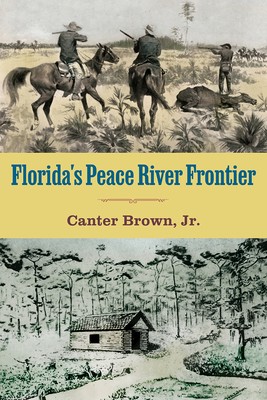
- We will send in 10–14 business days.
- Author: Edgar Canter Brown
- Publisher: University Press of Florida
- ISBN-10: 0813080606
- ISBN-13: 9780813080604
- Format: 15.2 x 22.9 x 2.8 cm, softcover
- Language: English
- SAVE -10% with code: EXTRA
Reviews
Description
The economic, social,political, and racial history of southwest Florida in the nineteenth century
For
most of the nineteenth century, southwest Florida and the Peace River Valley
remained a frontier as unknown to outsiders as the frontiers of the American
West. In this book, Canter Brown, Jr. records the area's economic, social,
political, and racial history in an account of violence, passion, struggle,
sacrifice, and determination. The Peace River originates in Polk County's Lake
Hamilton, one of the many lakes that dot the heart of interior Florida. It
flows past the towns of Bartow, Fort Meade, Bowling Green, Arcadia, Fort Ogden,
and Punta Gorda, finally meeting the sea at Charlotte Harbor on Florida's
southwest Gulf Coast. No great cities line its banks; no commerce passes along
its waters. Still, the river has bent and molded events of lasting significance
to Florida and to the nation. Using such primary materials as government records,
manuscript collections, and newspapers published throughout the country, Brown
documents the presence of Native Americans and African Americans in the area in
the aftermath of the First Seminole War. He examines the Civil War and
Reconstruction periods, paying particular attention to the Union/Confederate, Republican/Democratic
split among the area's residents. In the final sections of the book he
describes the arrival of the railroad and the growth of towns, the phosphate
boom, and consequences of the Great Freeze of 1895. Throughout this account, the author identifies by
name hundreds of persons who participated in these events, believing, he says,
that the stories of individuals and families are a vital part of the area's
history. Florida's Peace River Frontier
will appeal to readers interested in Florida history, the Civil War and
Reconstruction eras, African American history, and the history of the American frontier.
EXTRA 10 % discount with code: EXTRA
The promotion ends in 20d.05:34:44
The discount code is valid when purchasing from 10 €. Discounts do not stack.
- Author: Edgar Canter Brown
- Publisher: University Press of Florida
- ISBN-10: 0813080606
- ISBN-13: 9780813080604
- Format: 15.2 x 22.9 x 2.8 cm, softcover
- Language: English English
political, and racial history of southwest Florida in the nineteenth century
For
most of the nineteenth century, southwest Florida and the Peace River Valley
remained a frontier as unknown to outsiders as the frontiers of the American
West. In this book, Canter Brown, Jr. records the area's economic, social,
political, and racial history in an account of violence, passion, struggle,
sacrifice, and determination. The Peace River originates in Polk County's Lake
Hamilton, one of the many lakes that dot the heart of interior Florida. It
flows past the towns of Bartow, Fort Meade, Bowling Green, Arcadia, Fort Ogden,
and Punta Gorda, finally meeting the sea at Charlotte Harbor on Florida's
southwest Gulf Coast. No great cities line its banks; no commerce passes along
its waters. Still, the river has bent and molded events of lasting significance
to Florida and to the nation. Using such primary materials as government records,
manuscript collections, and newspapers published throughout the country, Brown
documents the presence of Native Americans and African Americans in the area in
the aftermath of the First Seminole War. He examines the Civil War and
Reconstruction periods, paying particular attention to the Union/Confederate, Republican/Democratic
split among the area's residents. In the final sections of the book he
describes the arrival of the railroad and the growth of towns, the phosphate
boom, and consequences of the Great Freeze of 1895. Throughout this account, the author identifies by
name hundreds of persons who participated in these events, believing, he says,
that the stories of individuals and families are a vital part of the area's
history. Florida's Peace River Frontier
will appeal to readers interested in Florida history, the Civil War and
Reconstruction eras, African American history, and the history of the American frontier.


Reviews